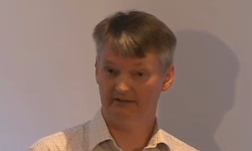Description: Selective Plane Illumination Microscopy (SPIM) greatly reduces phototoxicity in comparison with other fluorescent imaging modalities and makes it possible to image living small animals in 3D over extended periods of time. This talk describes an extension of SPIM such that it can be used with specimens on a coverslip rather than in a capillary (inverted SPIM or iSPIM), and a second modification that images the specimen using two perpendicular light sheets (Dual-View iSPIM or diSPIM), resulting in 3D datasets with the same resolution in X, Y, and Z (isotropic resolution)
About the Speaker: Hari Shroff
Hari Shroff is an Investigator at the National Institute of Biomedical Imaging and Bioengineering at the National Institutes of Health. During his post-doc, which was with Eric Betzig at HHMI’s Janelia Farm Research Campus, he focused on the development of PALM (photoactivated localization microscopy) microscopy. Since then he has developed several microscopy techniques, such as diSPIM and instant structured illumination microscopy.
For full tutorial & assessment go to iBiology
Medical and Patient education videos
-
Title
Description
-

Opening of the UK’s first National Centre for Aspergillosis was marked by a series of short talks from Doctors, Scientists and Patients.
-

This patient had severe kyphoscoliosis as a child with insertion of spinal rods in early adulthood. She is a life-long non-smoker. She first presented in 2001 with an irritating cough and several treatments with antibiotics failed to alleviate it.Aspergillus precipitin titre was high and she was initially diagnosed with chronic pulmonary aspergillosis with one cavity containing an aspergilloma. This patient developed resistance to all azole therapies.
-

Sources of aspergillus and how can I clean up at home? By Professor Malcolm Richardson
-

Informal recording of a meeting for patients. By Philip Langridge Aspergillosis Specialist Physiotherapist.
-

Simple steps for patients to loosen phlegm in the lungs and easily produce sputum samples for testing in the clinic. Designed for aspergillosis patients or any patients with respiratory illnesses.
-

A double lung transplant has been carried out on a young cystic fibrosis patient, who had more than 10 aspergillomas in her lung. Clip shown on BBC North West news shows an interview with Becky and Prof Denning.
-

Short history from patient’s wife. Brief history and experiences of attending National Aspergillosis Centre
-

Immunodiffusion technique to test for serum antibodies in patients – describes how to set up a test for the presence of antibodies in serum which are specific to various fungal pathogens. The technique is used to test and measure titres of these antibodies in the serum of infected patients.
-

21-year-old medical student Jo Armstead has made a major discovery, which will help doctors better able to diagnose and treat patients with Cystic Fibrosis (CF). Jo spent hundreds of hours accessing data from 30 countries to discover that there are over 75,000 people with the genetic disorder, of whom half are over 18 years – with 50 per cent infected by the fungus, Aspergillus. Professor David Denning, Director of the NHS National Aspergillosis Centre and Professor of Infectious Diseases in Global Health at the University of Manchester explains: “The life expectancy of people with CF has been increasing, but aspergillosis has a major negative impact on many. By painstakingly crunching the numbers, Jo has helped us better understand the scale of the challenge which will lead to better diagnostics and treatment strategies.” Prof Denning and Jo were interviewed on BBC-1 Breakfast last Sunday June 29th.
-

Literary event – Manchester Literature Festival hosted at Manchester Museum to increase awareness of Aspergillosis, in October 2013. Exploring literature, music and medicine.
